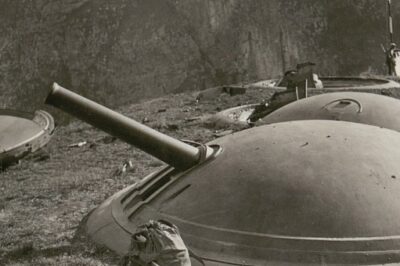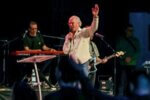Editor’s Note: This is part one of a two-part article. Watch for part two, coming soon on charismamag.com.
One of the most inspiring stories of peace through Christ among ardent enemies unfolded in a potentially volatile setting. Here is the World War II story of a German mother, her 12- year-old son, three American soldiers and four German soldiers—each of the three parties previously unknown to one another, and how they came together to celebrate Christmas in 1944 in the height of the Battle of the Bulge. This battle was the turning point of World War II on the Western Front.
On Dec. 16, 1944, the Germans initiated a massive campaign against the Allies in the Ardennes Forest, a mountainous region extending throughout Belgium, France and Luxembourg on the Western Front. Over 250,000 German troops mounted a blitzkrieg, attempting to divide the Allies in a major offensive from the Ardennes to Antwerp. This set the stage for the Battle of the Bulge. Heavy snowstorms erupted unexpectedly, forever changing the course of this infamous battle and possibly World War II, along with the individual lives of millions of people, and particularly nine individuals one Christmas Eve.
The soldiers were fighting in trenches, on the plains and on the mountain sides. Supplies came to a devastating halt. In thousands of cases, no ammunition, no food, no medical help, no shelter from the elements, no field jackets, no gloves, wet socks and wet, worn-out boots, no heat and separation from their platoons! Soldiers were using newspapers and curtains from the wreckage of houses and cabins that were bombed to wrap their feet in. Additionally, there was a lack of communication, broken morale and a broken chain of command.
Disorientation prevailed. But eventually, the weather improved, and the Army Air Forces dropped supplies. The battle lasted until Jan. 25, 1945. The Allies declared victory. But with more than 100,000 casualties on the American side alone by freezing to death or by shooting and the 106th Division nearly destroyed, is this what victory looks like? It seemed like the battle simply came to an end because the Germans ran low on fuel, ammunition, and manpower. The Battle of the Bulge has been called the most devastating battle of World War II. But out of it came forth an example of what peace through Christ looks like.
In the Ardennes Forest an American soldier was shot in the upper leg and was bleeding to death. Two fellow American soldiers tried to help him get behind the American line several miles away. They were starving and freezing. There was deep snow on the ground, and a heavy snowstorm erupted. However, the cold weather prevented infection from setting in the wounded soldier. But disorientation set in. They wandered aimlessly in the Ardennes Forest for three days.
In the distance they saw a cabin and approached it. When they approached the cabin, the two laid their wounded soldier on the snow. They kept their speaking to a minimum and in a low tone of voice to try not to be overheard, but failed.
One of the soldiers knocked on the cabin door. Inside was a German mother, Elisabeth Vincken, and her 12-year-old son, Fritz Vincken. Their home was in Aacken, Germany. It had been partially destroyed when Americans bombed the area and hit their home and the family business which was a bakery. The Vinckens were not injured when their house and bakery were badly damaged. Mr. Vincken sent his wife and son to their cabin, where they stayed when Mr. Vincken went hunting.
Mr. Vincken remained behind to repair their house and business. He rode his bicycle every four days to take food to them. His plan was to join them at the cabin when he completed the restoration of their home. He had hoped to be done by Christmas Eve and celebrate Christmas with his wife and son at the cabin. But he did not show up due to the severe snowstorm.
When Mrs. Vincken heard the American soldiers speaking outside, she blew out the candle. When the American soldiers knocked at the door, Fritz, her son, went to the door. Mrs. Vincken followed. She gently moved him away from the door and she opened it. There stood two American soldiers with weapons and a third lying in the snow. They looked like teenagers. In those days, any 16-year-old male could like about his age and get into the U.S. Army if he looked old enough.
Mrs. Vincken did not know English, nor did the Americans know German. But one of the Americans spoke some French, as did Mrs. Vincken. So in broken French and with some sign language, they explained that they were lost, hungry, close to death and that the soldier lying on the ground was shot and bleeding to death. The American soldiers asked for any assistance she might be able to provide in terms of shelter and food for the night, so that they could start in the morning to find the American lines to get to safety.
There was a German law forbidding German citizens from harboring enemy soldiers. Mrs. Vincken could be shot for providing any assistance. But it was a holy night—Christmas Eve. Mrs. Vincken was Lutheran. Lutheran was the state religion of Germany. So Mrs. Vincken let them in. Had Mrs. Vincken turned them away, the American soldiers would not have forced their way in. They would have continued on and hoped to survive the night. I would like to point out that Mrs. Vincken was not a sympathizer with the Allied forces at all. She was a Christian and would have assisted anyone needing humanitarian help.
Mrs. Vincken sent Fritz to get six more potatoes from the shed outside and to bring in the rooster. She was going to prepare a Christmas Eve supper for the American soldiers. So Fritz went outside and soon returned with the six potatoes. Then he went back out to get the rooster, and then brought the rooster in. She went to work in the kitchen preparing supper. Shortly thereafter, there was another knock at the door. So she assumed more American soldiers had arrived needing help.
She opened the door and turned as white as a ghost. There stood four German soldiers with weapons. Mrs. Vincken greeted them. They had lost their way in the forest during the snowstorm. Separated from their unit with no food nor warmth for days, they were hungry and feared they might die in the sub-freezing weather with no help in sight. The German soldiers were probably as young as the American soldiers, except for the corporal, who was 23 years old. The three other German soldiers held the rank of private. Mrs. Vincken stepped outside and shut the door to speak to the German soldiers privately.
She explained that three American soldiers came and that one was severely wounded and bleeding to death, and that they were inside. She said, “It is the holy night, and there will be no shooting here.” And she told them that they could eat as much as they wished. She then asked them to give her their weapons. They agreed. She had them lean their weapons against the cabin outside.
Watch for part two of this article on charismamag.com.
James F. Linzey studied church growth under C. Peter Wagner and signs and wonders under John Wimber at Fuller Theological Seminary. He is the chief editor of the Modern English Version Bible and is a retired Army chaplain with the rank of major.







Leave a Comment
You must be logged in to post a comment.